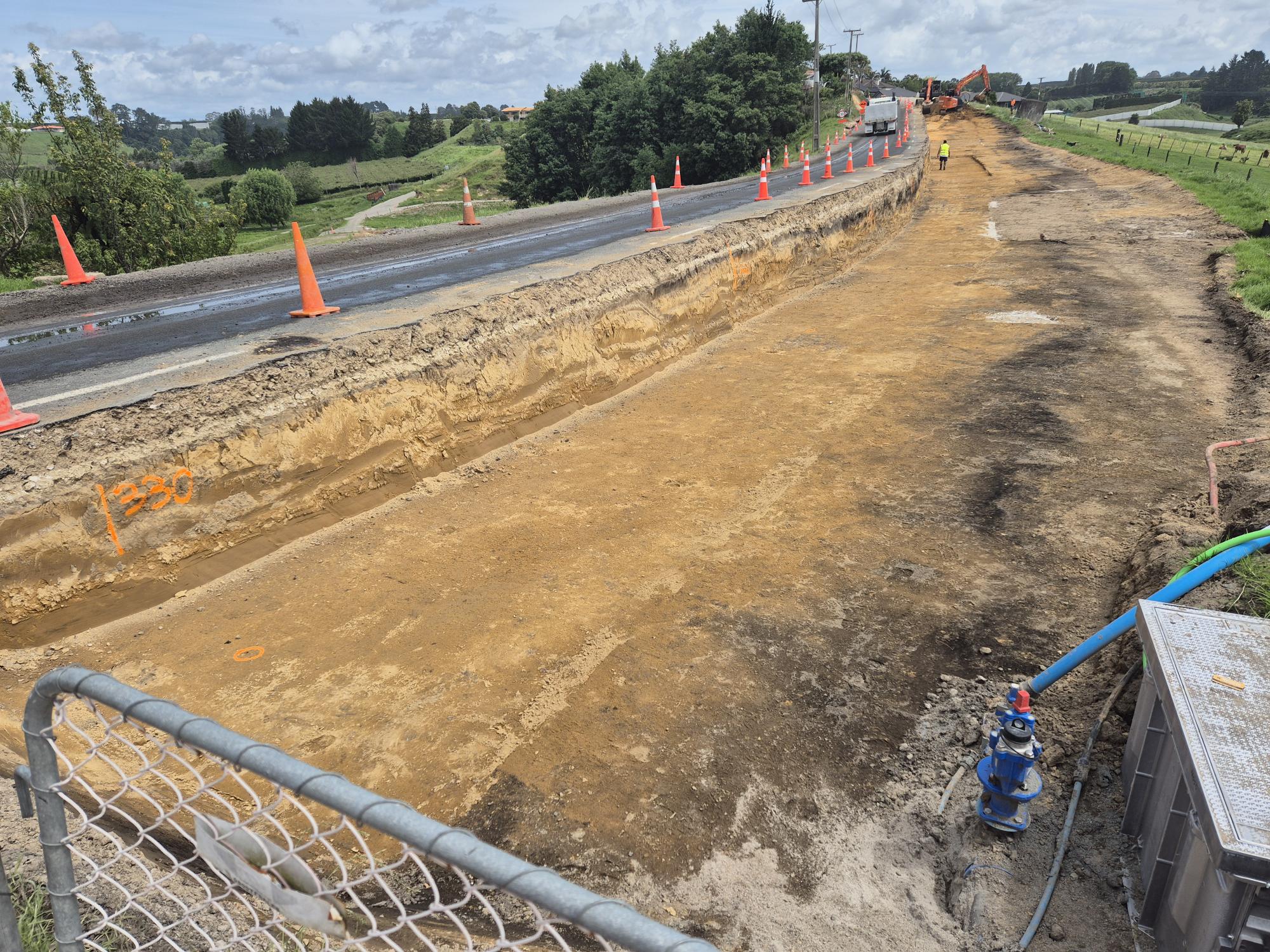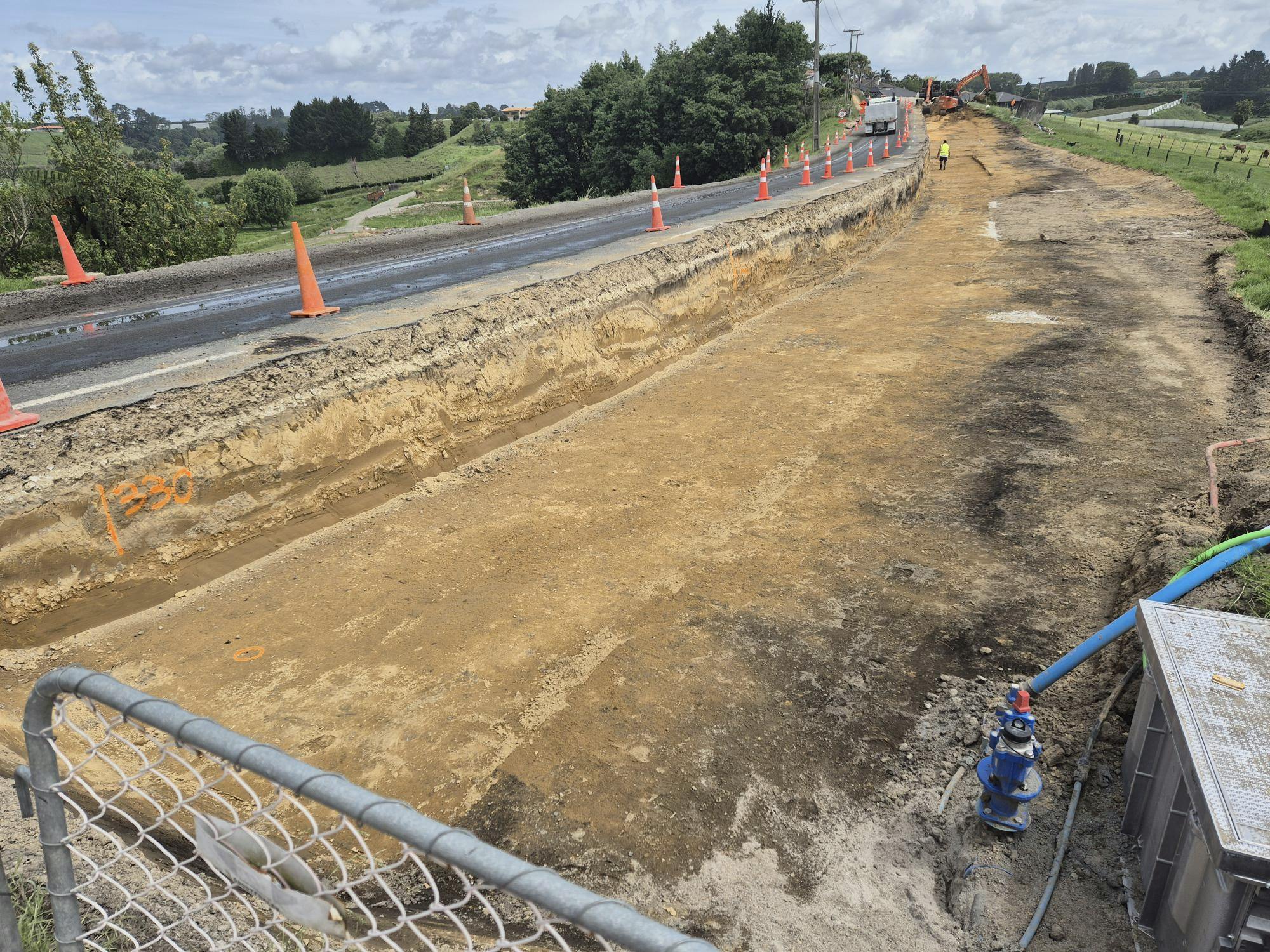No. 1 Road Rehabilitation
Kia ora, welcome to the No.1 Road rehabilitation project page. Here, you’ll find everything you need to know about the project, including latest updates, and a timeline of upcoming steps. Check out the information on the right-hand side of this page for all this and more.
About the project
We’re upgrading No.1 Road in Te Puke to make this vital urban–rural route safer, stronger, and better prepared for the future.
No. 1 Road connects orchards, post-harvest businesses, farms, and homes to the wider area - making it a key link for the local community and economy. Over two years, we’re delivering a package of improvements to support safer travel, reduce surface flooding, and prepare for future growth.
What the project includes
Road lowering: A section near Cannell Farm Drive is being lowered to support a potential future connection - doing this now while we’re doing other work avoids major rework later
Stormwater upgrades: Roadside drainage is being improved to protect the road from storm damage
Road rebuilding and resurfacing: Sections of the road are being fully rebuilt to improve durability and long-term performance
What to expect during construction
The road will remain open, with stop/go traffic management in place
Temporary speed limits and daytime construction noise are expected
Property access will be maintained throughout the works
We’ll continue to keep residents and businesses informed as the project progresses
The first phase of this work, between Roderick Lane and number 56 No.1 Road, has now been completed, and we have started the second phase, between 56 No. 1 Road and Te Puke Highway.
The works within the road corridor are expected to be completed by late February 2026, with the overall completion date being April 2026.

What’s happening now? (26 November)
The second phase of works along No. 1 Road are now well underway. One lane has been cut down to subgrade level, showing how deep the road will be lowered to connect with the future road.
Next, we will be installing the subsoil drain, followed by the construction of a temporary road in this area. Once that's in place, traffic will be shifted onto the temporary road to allow the other lane to be lowered.






